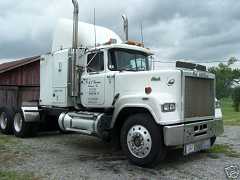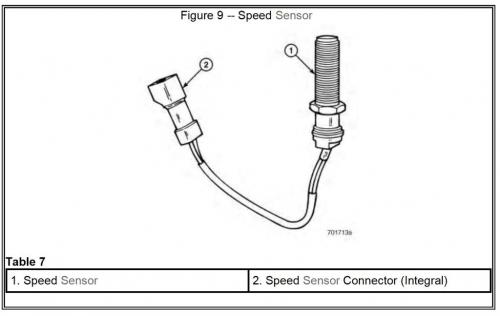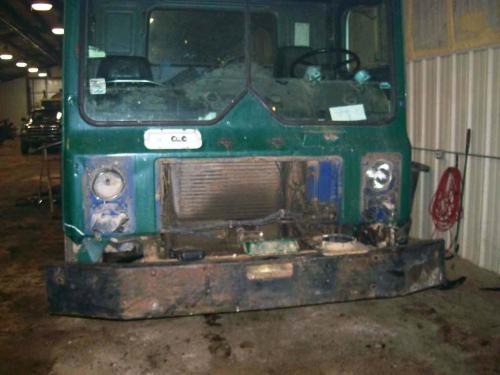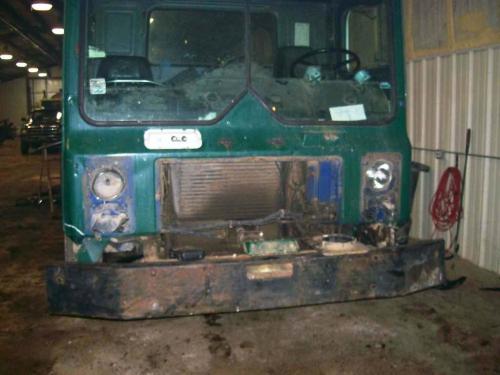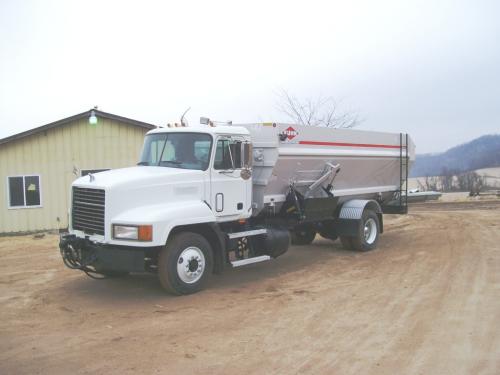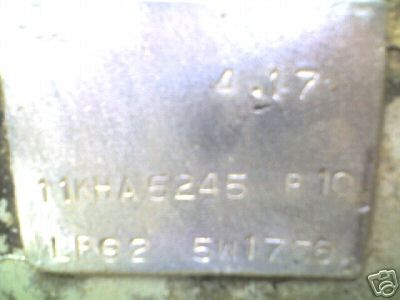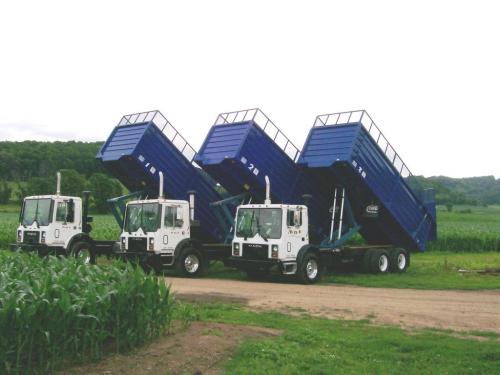-
Posts
193 -
Joined
-
Last visited
Content Type
Profiles
Forums
Gallery
Events
Blogs
BMT Wiki
Collections
Store
Everything posted by Maxville Truck
-
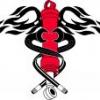
Please Recommend A Transmission
Maxville Truck replied to mackattack2's topic in Engine and Transmission
The 2070 and 2060 have an integral bell housing, and should bolt right up, and they are both an air shifted trans mission.... Here is the "book" method for shifting right out of the manual!! The T2060/T2070 are non-synchronized transmissions. There is a Lo and Hi auxiliary section controlled by an air-shift range selector on the shift lever. Lo-range provides one low ratio in the T2060 and two low ratios in the T2070. In Hi-range there are five forward gears which can be shifted in the standard manner. Remember, however, to double-clutch whether moving up or down through the gears. For normal highway use, start in Hi-range first gear and shift through second, third, fourth and fifth. The Lo-range in these transmissions is designed for use in off-highway and slow-moving operations (curb pouring, material spreading, heavy load/steep grade). Reverse can be used in Lo-range or Hi-range. UPSHIFTING To upshift the T2060, begin in first gear, Lo-range. Depress the clutch pedal and release the accelerator pedal. Flip the air-shift range selector to Hi-range (the vehicle is still in first gear). Release the clutch pedal and apply the accelerator to reach the top of the operating range. Shift through second, third, fourth and fifth, while double-clutching. To upshift the T2070, begin in first gear Lo-range (referred to as Lo-Lo, shown on the shift pattern diagram). Upshift to second gear Lo-range (referred to as Lo) in the normal manner (double-clutching). When ready to upshift again, depress the clutch pedal and release the accelerator pedal. Move the gear shift lever to neutral, flip the air-shift range selector to Hi-range, double-clutch and move the gearshift lever back to first gear position. This is first gear Hi-range (next higher ratio). Release the clutch pedal and apply the accelerator pedal. Continue to upshift through the normal second, third, fourth and fifth gear ranges, while double-clutching. DOWNSHIFTING Downshift the T2060 as normal from fifth to fourth, third, second and first (remember to double-clutch). When at the low end of first gear Hi-range, depress the clutch pedal, release the accelerator pedal and flip the air-shift range selector to Lo-range. Release the clutch pedal. To downshift the T2070, downshift as normal from fifth to fourth, third, second and first in Hi-range (double-clutch between them all). The next lower shift will be to second gear Lo-range (referred to as "Lo"). When ready for this gear, depress the clutch pedal and release the accelerator pedal. Move the gearshift lever to neutral and flip the air-shift range selector to Lo. Double-clutch and move the shift lever to second gear (Lo). The vehicle is now in second gear Lo-range. The next lower gear (and lowest ratio) is first gear Lo-range (Lo-Lo). Double-clutch and downshift to first Lo-range at the appropriate time. -

Please Recommend A Transmission
Maxville Truck replied to mackattack2's topic in Engine and Transmission
Oh if only a scratch was all I heard....!!!!! :wacko: My guys "GRIND" the living sh&% out of my T2060 transmissions. (i get the fingernail down the chalk board feeling every time I hear it, but I can't drive em all myself!!)and they work day in and day out. as far as getting used to the shift point any small bit of common sense you should get it with about 1 days worth of driving, if not please stick with synchros. As far as "scratch" goes, I don't mean press the shifter with a lot of pressure to get into the next gear.... just enough pressure to barely feel the gears "scratching" and by the way unless your drain your transmission.... there should be a film of 80 w90 between the "scratching" slider clutch and intermeshing gear.. so not much metal should be flaking of the meshing gears!! -
Ive got a t2050 .....
-

Please Recommend A Transmission
Maxville Truck replied to mackattack2's topic in Engine and Transmission
Not to many transmission manufacturers in the heavy truck world offer syncro transmissions!!! Personally I think it is because syncros are prone to failure and heavy truck manufacturers want strong products, not failure prone products. Volvo I know has or had a syncro heavy transmission. Double clutching is the book method for shifting all heavy non syncro transmisions. I personally use the clutch for starting out and changing direction. and occasionally to get out of gear on a tough conditon, otherwise listening to the engine and feeling the light "scratch" you can shift like butter without the clutch.I can't speak to the "superior" helical design vs. spur gear design, but i'm pretty sure that mack by far has the strongest transmission of any other manufacturer. But I would recommend only 2 transmisions for your needs either a t2060 or t2070 transmissions. Both have a .6 to 1 over drive. so your should see close to 70 mph in high gear. the t 2060 has a 9.02 to 1 low gear while the t2070 has a 14.16 to 1 low gear. I'm sure that many people could argue these points with me....... :SMOKIE-LFT: -

Single To Tandem
Maxville Truck replied to M54A1's topic in Antique and Classic Mack Trucks General Discussion
I disagree about not welding....... I stretch frames all the time in my shop and we weld everything.... We grind all the frame sections to a 45 then weld both sides, then we install a piece of channel usually at least 3 feet long centered on the welded section then weld and bolt that piece in. The trucks we send out are hauling usualy way over loaded, no failures yet..... we make sure everythng is extra heavy!!! (but im not a frame expert!!) -
I would assume you have a fan cutch?.....if so take a piece of flat metal about 2 inches long, 1 inch wide, grind a small groove in the centr of each end... now prop that between a clutch fan mounting bolt and fan mounting bolt, grab the fan blade and push against the fan belts (for tension) and spin your motor to where you need it..... I do it all the time. saves having to turn it by the flywheel teeth.. good luck
-
You will spend some money, putting the automatic in your truck, but my experience (almost all in off road agricultural applications) is you will like the ease of driving gas and brake.... I still stand firm on the ht750 it has the lower hole for those tight sticky situations.
-
Lee, I've got about 4 sets of 22.5 spoke hubs for 18,000 fronts in my yard.... my guess is that the will fit right on, the only thing I dont know is if the drums will match up. other wise I changed a set over to hub pilot for a customer that wanted aluminum floats. all we need for that was HUBS, BEARINGS, SEALS, AND NEW DRUMS. Call me I should be in the shop all day...Chris
-
Couple of questions we need to answer first... 1. what model is your existing transmission. 1076 perhaps or something different? If It is over drive you will be dissapointed in your road speed. an ht 740 is direct 1:1 in high gear. 2. The transmission serial number will have to be checked on to ensure that the shift points match your engine. Most of the allisons were set up specifically for their application, IE shift points may be higher or lower depending on which engine it was attatched to. (I think a good trustworthy trans man could change those settings in the valve body tough) 3. a 740 is only a 4 speed and will not have a real low ratio in 1st, the torque converter makes up for low gears, however if you do not have enough power you may find yourself in trouble if you get in any sticky situations. In my opinion you would be better off with an ht750.... just an opinion though... Once you figure those things out I will just take the right trans mounting brackets and flex plate/fyweel for your aplication. Got a good mack yard in Lakeville MN (Mander's Diesel Repair) that would probably have everything you need. I've done a few on MR models, also you may need to change your driveshaft length, ad make darn sure you get the kick down set right, and a properly sized cooler....!!
-
I've got a 1989 R model with a wiper motor problem..... It runs fine for a short while then it sticks the blades straight up and just leaks air...If you shut the switch off and then back on it will run again for a short time, the whole time t runs though it sounds like it is leaking excessive air out of the wiper's exhaust port... the motor is more of a round shape then the traditional barrel shaped motors i've seen on other trucks. Just wondering if anyone has any experience rebuilding these? any help would be apreciated, especially in kit sourcing!!
-
Silly question for anyone to answer....? I'm very familiar with tractor pulling "farm stock" I used to pull a Massey ferguson 1100, 1130, 2775 and a 275. We had weight bracket all over the tractor (the 1100 was our baby), and could shift weights according to how we read the track. however I've never been to a semi pull other than seeing one on espn. How is the sled hooked to the semi? and what suspension works best with pulling. What modifications for stock classes are you allowed to use if any. I have an 84 superliner with a 440 e-9/12speed mack trans/neway air suspension in it that I bought just for restoration/pulling purposes. any suggestions or advice would be great.
-

Another Tach Question
Maxville Truck replied to Speed's topic in Electrical, Electronics and Lighting
Speed!! check this link out, (JC Whitney) http://www.jcwhitney.com/autoparts/Product...0002124/c-10101 good luck -

Another Tach Question
Maxville Truck replied to Speed's topic in Electrical, Electronics and Lighting
Speed, I believe that the alternator trive tachs are designed to operate at a higher "frequency" than the coil driven tachs, the alternator spins several RPM higher than the engine, therefore the "calibration" is set differently internally, If your tach has any dip switch settings on the back of it it may be possible to adjust the operating "frequency". IE, if the alternator output is 50 pulses per rotation and is turning at 5 times the the rpm of the engine it would have a "frequency" of 250 per one RPM. your coil frequency for a 6 cylinder would be 3 per one rpm. some one will probably correct me on this..... I had a alternator tach one time on a pulling tractor that straped to the outside of the alternator with and inductive pick up. it was very inaccurate, especially if the belt slipped, or the alternator load changed..... -

Air Compressor To Block Adapeter Needed Please
Maxville Truck replied to maxidyne237's topic in Engine and Transmission
Ive got a bad compressor, lying somewhere around my shop..... dont know if it is the right adapter though it was off of a early 80s r model ,what does the other side of the adapter look like? How did it break?? I only ask because I had a 4valve e-6 one time start breaking different castings on the motor could never figure out why until It finnally cracked the block itself. left the motor sit for a few years before I finnally tore it down..... a wrist pin snap ring fell out of one of the pistons, and the wrist pin was sliding up and down the sleeve. The motor was still running perfectly accept for the oil running out of the block!! couldn't feel the vibration though.... -

Tachometer Question
Maxville Truck replied to Hook n ladder 1's topic in Electrical, Electronics and Lighting
-

Tachometer Question
Maxville Truck replied to Hook n ladder 1's topic in Electrical, Electronics and Lighting
being a 98 you should have a proximity sensor that counts the teeth on your ring gear to give a reading to your tachometer. most likely cause of your problem will be either poor connection to that sensor or the sensor is loose in the flywheel housing that it threads into. crawl under the truck find the approximate area in your bell housing where your ring gear is. then follow the circumference around until you find it. the sensor will be either about 7/8" or 3/4" in diameter, fully threaded with a jam nut , with either 2 or 4 wires comming out of it. check the connections, then grab the sensor and see if it is loose in the flywheel housing. if so loosen the jam nut and tighten it into the ring gear then back it of just enough so it does not touch the ring gear. then tighten the jam nut. GOOD Luck!! I will try and find a picture of one.... -
Got a Big DM in my shop with a hook lift on it, poor brakes. Upon further inspection i determined time to pull the hubs. has the 65,000 rear axle setup. biggest damn axles i've ever seen!! butterfly hood, 285 2 stick etc. here's the problem can't get the rims off the hub got the wedges off rims are rusted to the hub. SPrayed her down with penetro 90 (schaeffer's wd-40) air hammered the hell out of it. NOW WHAT!!!???, tempted to screw the wedges on loose and drive it around the yard. I'll post pictures later this evening of what she looks like. any help would be appreciated!!
-
I think an MR or an LE would suit you well. I have the ins with a few people and ussually get them for around $10,000 almost always allison 740s (4 speeds). ussually come with big hydraulic pumps crankshaft driven. I'll attatch a before picture of the last one i did. (spent alot of money on body work etc.) I also put a former postal CH together as a TMR truck (also auto 740), That truck turned out good too!!
-
-
That rearend is a little newer than any of my stuff (all 89 to 91)... their numbers are all stamped with a standard looking letter. the ratio that I have seen on a 97 MR (1 of 3) that I built for a neighbor was stamped almost as if they used a sharp center punch and formed the numbers digitally, and were not real easy to see, but if you read the other numbers just keep looking around that area, anyways i think those numbers you gave me here are just the part numbers of the carrier, (someone correct me If I'm wrong) look for just a 3 digit number ussually towards the right middle of that "ramp" sometimes it says ratio close to the number. but between the 1st and 2nd of the 3 numbers their should be a decimal point. that will be the ratio. My trucks with 6.34 and t2060 trans will do clse to 65-70 (cranking probable over 2250 rpm though) I had one e-6 4valve once slowly lose rpm over time I think the govenor spring keeper (inside the pump was slowly backing off) just call me crazy though...
-
Raybing, crawl under the truck with some brake cleaner and a brush...., facing the rear of the truck on the front side of the rearend to the left of center is what I call a "ramp" clean that flat spot and start looking for the 3 number stamped into it. I have 6.34 ratio in most of my manure trucks and one with the 5.55, they all go at least 65 the 5.55 will push 70 at about 2150 to 2200 rpms..... But I had the rpms turned up on all the pumps. I know in the other posts somebody said that you could just turn the throttle stop screw to raise the RPMs that isn't totally true it will not give you enough fuel for any power... You may be able to see 2050 rpm but as soon as you put a load on it, you wont get any lug power until 1700 to 1800. I will warn you that your engine with different governor springs may freely rev as high as 2350... I told my pump guy I want full fuel under load at 2150. Good luck!!
-

Auxillary Transmission
Maxville Truck replied to raybing's topic in Modern Mack Truck General Discussion
I know your problem!!! i've got an MR with the same engine but the T2070 and "tripple nickel" Ratio. Haul cow SH&$ with it, couldn't shift it in the fields. open your hood and make sure when you press the throttle down that your throttle linkage is fully opening your pump.. The bell crank arm that clamps to your fuel pump could be loose or just plain wore out. IF thats your problem, but still not enough RPM, then your alternative is to remove your pump and have the RPM's bumped to 2100. @2100 that truck will move along at over 70mph. -

How Do I Properly Remove The Hub Seal?
Maxville Truck replied to ThaddeusW's topic in Driveline and Suspension
Gear oil is cheap...(relatively speaking) You can never have to clean of oil in any of your drivetrain, change it!! certain properties of oil will degrade over time and could lead to failure. yeah in the bent seal situation I would not have chanced it either, the seals i'm refering toare the easy to push in type (rubber on the outside sealing surface) they usually come out pretty easy. GOOD LUCK!! -

How Do I Properly Remove The Hub Seal?
Maxville Truck replied to ThaddeusW's topic in Driveline and Suspension
I wouldn't recomend reusing the seal over ...... However I do it all the time (when they slide off without coming apart) on my manure trucks, i've even in a pinch put the seal back together including the little inner spring and gotten them to reseal. Little hint, completely clean with brake clean and blow dry then lube with a good quality grease (I use schaeffers grease little stickier) inspect the sealing surface closely if it showes no sign of dry rot or cracking, crap shoot it and put it in.. for my short haul use not a problem. any over the road guys no way!! remember if it leaks you'll take it bac k apart!! -

E6 350 4v Short On Power, Worse Than Ever, Gutless!
Maxville Truck replied to treemuncher's topic in Engine and Transmission
Are you certain you have the ambac pump and not the robert bosch? If you have the bosch and the "puff limiter (Aneroid)" is not hooked up you will have a slugish low power feeling .... But as MACKS said You would have plenty of power. If you do indeed have the ambac and your puff limiter is hooked up your reverse relay valve could be faulty, someone correct me if Im wrong, Tha way the puff limiter works on the ambac, is compressed air goes through the reverse relay to the limiter cylinder on the pump under no boost conditions (idle), and as the engine builds boost it takes away pressure from the limiter cylinder and allows for more rack travel..One thing I ran into with an 89 r model one time is one of the fuel lines had collapsed inside and restricted fuel flow bad enough to cut the power on the top end (4vh 350 ambac pump). We started replacing all the fuel lines around the filters and fuel pump of course it was the last one we changed that had the problem.... could be lift pump also good luck!!
BigMackTrucks.com
BigMackTrucks.com is a support forum for antique, classic and modern Mack Trucks! The forum is owned and maintained by Watt's Truck Center, Inc. an independent, full service Mack dealer. The forums are not affiliated with Mack Trucks, Inc.
Our Vendors and Advertisers
Thank you for your support!



